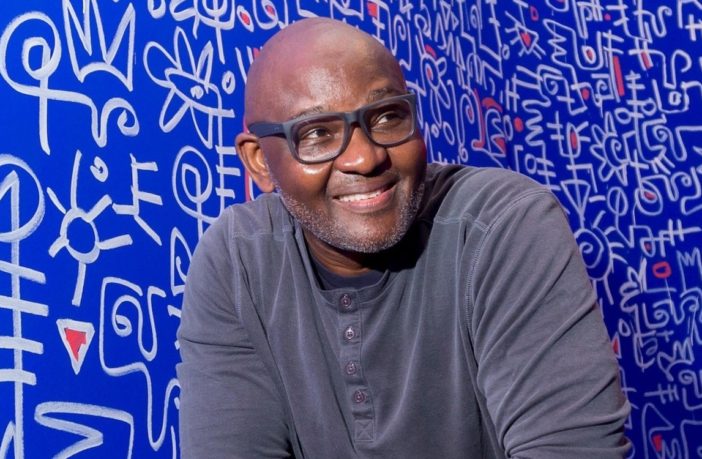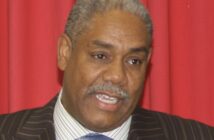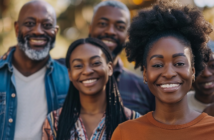Ask Nigerian-born, D.C.-based artist Victor Ekpuk for three words to describe his art style, and you’ll be intrigued by his answer. “I don’t really invest the time to describe my art style; I’m more interested in imagining and creating,” he declares. “I leave questions of styles to the historians and others who feel the need to put things in boxes and label them.”
His upcoming exhibit, Language and Lineage at Princeton University Art Museum in New Jersey explores various themes that have unfolded in Ekpuk’s work over the last three decades, according to its curator Curator Annabelle Priestley, Ph.D. Using ancient Nsibidi graphic communication from Nigeria, as well as characters borrowed from other cultures and his own vibrant systems of expression, Ekpuk celebrates the syncretism of our multicultural societies. He uses this visual language to comment on political oppression, social issues and police brutality. Here, Ekpuk sheds more light on his work and motivation.
Royals and Goddesses 2, Victor Ekpuk, 2019.
Image: courtesy of the artist and Morton Fine Art.
EBONY: What is your new work featured at Princeton about?
Victor Ekpuk: I am pleased with this exhibition Language and Lineage. My curator has attempted to summarize three decades of my artistic practice, selecting works with political, social and cultural themes. My work tends towards abstraction informed by the aesthetic philosophy of Nsibidi and other African aesthetics.
Which piece is your favorite?
I don’t usually favor my works, but in the context of this exhibition, “In Deep Water,” a digital drawing I made in 2012 resonates within the venue. Princeton’s Bainbridge House is associated with a narrative of an African descendant who was owned as an enslaved person here. It motivated me to enlarge this drawing and make it a central piece in this exhibition which is inspired by my visit to a boys’ high school in an African American neighborhood in Washington, D.C. The architecture was very jarring to me: a brutalist design that looked like a huge unemotional concrete bunker. To get into the school I went through several metal dictator security gates. I was told it was a school for boys who may have issues at home; putting them in this environment felt like they were already in prison. It felt inhumane. My artwork pictures the head of a Black person with water just under their chin–they can either sink or swim. The history of Bainbridge House made me think about descendants of enslaved Africans who are themselves still struggling for air in America.
You are well-versed in the Nsibidi language, an ancient communication system invented in southern Nigeria and northwest Cameroon.
As a child, I grew up with Nsibidi practiced around me and watching my maternal grandfather, a titled chief, entertain Ekpe and Ekpo masquerades as they performed Nsibidi in his compound. I learned more on an intellectual level in college while researching it as a means of developing my own artistic visual language. I was most fascinated that it busted the miseducation and colonial lie that my and African cultures as a whole were illiterate cultures. Nsibidi is a form of literacy that does not conform to Western-style literacy.
How does your Nigerian upbringing affect your artistic output?
I am very blessed to have been born in a country still very rich in culture. My conscious dipping into the aesthetics of Nigeria has fed my artistic expression immensely.
When we plan a trip to Nigeria, what are some must-see destinations?
I’d go to Obudu Mountain Resort in Cross River state, one of Nigeria’s best and most beautiful tourist centers. It sits on Obudu plateaus, about 5000 feet above sea level. It has a temperate tropical climate and views of lush green rolling mountains with rare species of birds. It’s a perfect tropical paradise to breathe fresh air and be with nature.
Then Visit the Women’s War Museum in Ikot Abasi town in Akwa Ibom state in South Eastern Nigeria. It’s the site of one of the largest protests by women in Nigeria. The Women’s War occurred from November to December 1929. Over 50 women were shot at point blank and massacred by the British colonial administrator. This museum commemorates those brave women activists who were massacred while protesting against British colonial rule and unjust taxation.
Language and Lineage opens at [email protected], Princeton University Art Museum on July 22.



